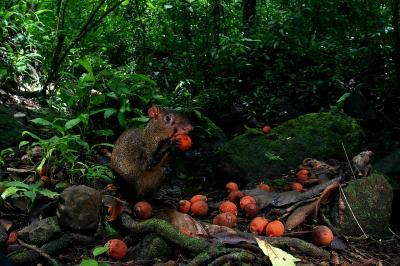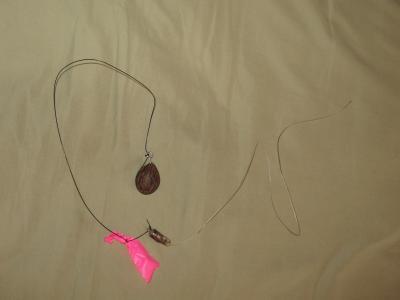Radio tracking revealed a surprising finding: when the rodents dig up the seeds, they usually do not eat them, but instead move them to a new site and bury them, often many times. One seed in the study was moved 36 times, traveling a total distance of 749 meters and ending up 280 meters from its starting point. It was ultimately retrieved and eaten by an agouti 209 days after initial dispersal.
Researchers used remote cameras to catch the animals digging up cached seeds. They discovered that frequent seed movement was primarily caused by animals stealing seeds from one another. Ultimately, 35 percent of the seeds ended up more than 100 meters from their origin. "Agoutis moved seeds at a scale that none of us had ever imagined," said Jansen.
"Previously, researchers had observed seeds being moved and buried up to five times, but in this system it seems that this re-caching behavior was on steroids," said Ben Hirsch, who ran the fieldwork as a post-doctoral fellow at the Smithsonian Tropical Research Institute in Panama. "By radio-tagging the seeds, we were able to track them as they were moved by agoutis, to find out if they were taken up into trees by squirrels, and to discover seeds inside spiny rat burrows. This resolution allowed us to gain a much better understanding of how each rodent species affects seed dispersal and survival."
By taking over the role of large Pleistocene mammals in dispersing these large seeds, thieving, scatter-hoarding agoutis may have saved these tree species from extinction.

Could agoutis, common rodents in tropical forests, have taken on the role of extinct gomphotheres, by dispersing large tree seeds?
(Photo Credit: Christian Ziegler)

Researchers attached tiny radio transmitters to seeds in order to track them as they were dispersed throughout the forest by rodents.
(Photo Credit: Patrick Jansen)